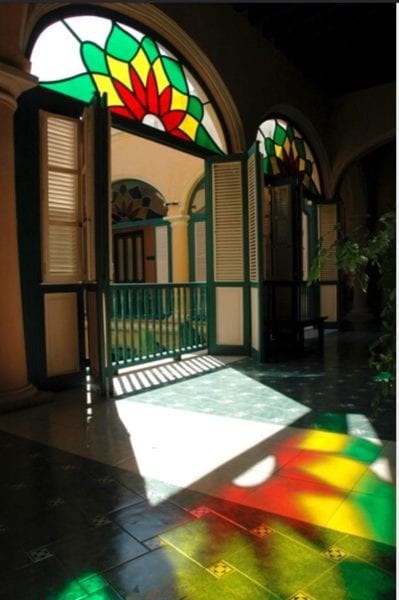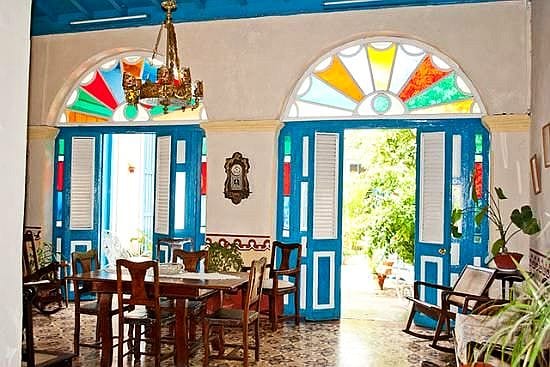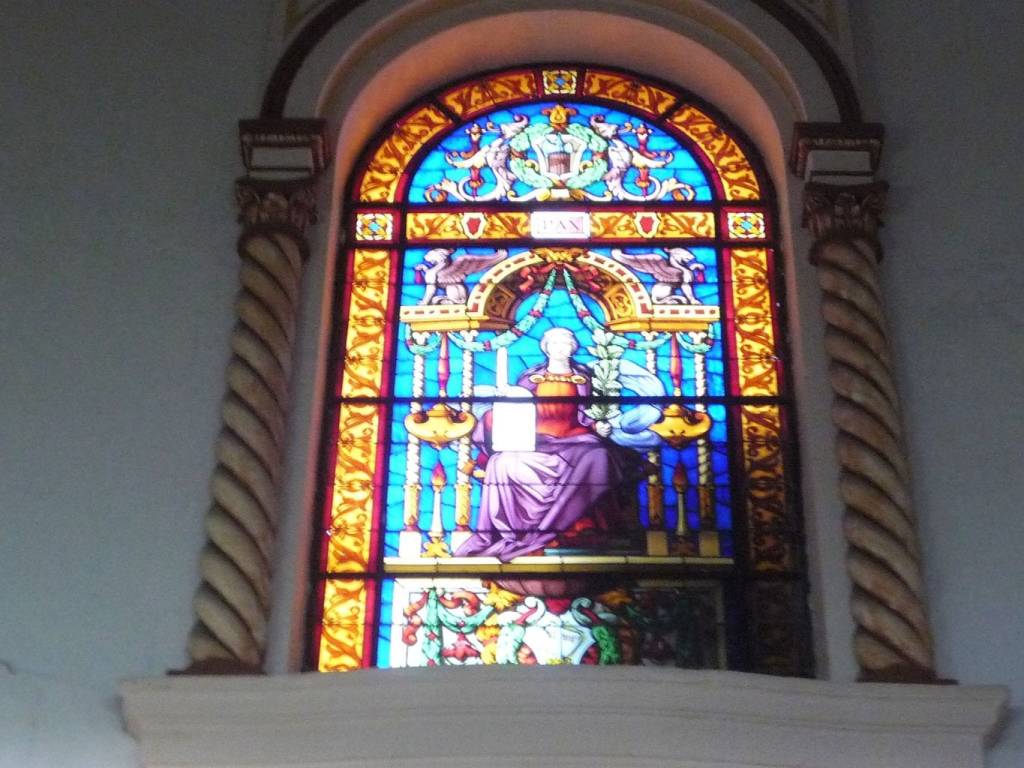The Anguish of Light – Havana’s Stained Glass Windows

The anguish of light in its thousand mysterious paths, multicolor reflections and enigmatic chiaroscuro, in the aged shadows intermingled with memories and history, these are Havana’s stained-glass windows that have breathed life to my childhood fantasies.
Text and photos by Richard F. Potts
HAVANA TIMES – After years of absence, I returned, and I was rediscovering the stained-glass windows that used to challenge my imagination and make me ask about the origins of the anonymous craftsmen who used to play with their color fantasies in such a daring way.
I revisited the galleries surrounding the main patio at the Palacio del Segundo Cabo, in Plaza de Armas, to the windows at the Counts of Jaruco palace, in Plaza Vieja.
Even though nobody knows how stained-glass windows came to Cuba exactly, one thing we know for sure is that this heritage doesn’t just come from Spain. From my teenage readings, there is one book that I had almost forgotten: Vitrales de la Habana (Havana’s stained glass-windows), by an author whose name I can no longer remember, who dedicated himself to recounting the history locked in magical pieces of glass, with a great deal of love.
Some theories turn our attention towards the Mediterranean Sea, as there are bountiful examples of beautiful frames (wooden grooves) being used in Italy and Spain, using Cuban colonial glaziers to put them together, contrasting with the lead structures used in the north of these countries, and in France and England, since Gothic times.

During colonial times, colored glass was imported from Europe and glaziers specialized in cutting and polishing them, while carpenters framed them according to a design drawn up by artists and architects. Many of Havana’s colonial homes were marked in this way by anonymous hands, names of forgotten craftsmen who dreamed up the most unique harmonies with light and color.
In any case, there is evidence to suggest that stained-glass windows appeared in Cuba in the 18th century and reached their height in the third decade of the 19th century, lasting to the turn of the 20th century with the rise of a powerful middle class of creoles. Anxious to show off their wealth with art and architecture, they filled Havana with mansions that weren’t only a symbol of their wealth, but also of their “Cubanness” in trends and artistic tastes.
Thus, a long time after the colonial era and during the early stages of the Republic, many of Vedado’s homes flaunted amazing stained-glass windows in lead frames, where the heritage of yesteryears’ craftsmen was combined with more modern expertise and abstract design movements.

Later, in the ‘40s more or less, US culture invaded the city with its own take on modernity, and stained-glass windows gave way to reflective glass windows and the famous “Miami shutters”. However, stained-glass windows survived in the art world, until they experienced a rebirth during the renovation project of Havana’s historic center, which has rescued them from oblivion.
However, you don’t need to be an architect or expert to discover why stained-glass windows were such a success in colonial times, for there was limited artificial lighting during that time and as Cuba was a country full of sun, stained glass windows were the ideal architectural solution for the tropics’ humid conditions, as it is a barrier between outside and interior spaces, they stop wind and rain from coming in during the rainy season and they filter the bright sunlight during the dry season, making the most of it to not only light up homes, but also with an artistic purpose.
As stained-glass windows also contributed beauty and elegance to the city, they soon branched out to other towns on the island, especially churches and colonial houses. Those anonymous artists used up all their inspiration with colored fragments of glass, filling our everyday environment with colors and a display that author Carpentier would call “a fan of glass”.
Walking through Havana allows you to make visual memories: rectangular windows over other windows and balconies, swinging doors, half-moon arches on top of columns and colonnades.

If you keep an eye out, you might even see light dancing on these stained-glass windows at certain points of the day, and how they produce a new design on mosaic floors, creating superimposed images that make a kind of “virtual stained-glass window” whose ghostly shapes are the envy of today’s computers, slowly changing with the sun’s movements in the sky from noon until nightfall.
Watching these “virtual stained glass-window” changes, you can even read the whimsical tropical climate. When the sky is cloudy, the ghost languishes until it disappears and then the shape of the glass is more visible than the color. Sometimes the day is grey, but as soon as the sun bursts through the clouds again, the polychromatic glass and ghost come back to life again, its reflections now creating a clear image on the ground… but surprise, it isn’t the same anymore, it’s a different design and might even be just a little more whimsical than the one before it.

Havana’s stained-glass windows seem to have been designed with this innate chaotic simplicity: Curved shapes that are intercepted forming unfolded fans, windmill blades and real plant lace that not even the most seasoned expert has managed to classify in cold terms.
From other readings such as “City of Columns”, by Cuban writer Alejo Carpentier, I remember the statement that those windows, soaked by a sun filtered by the glass, were already abstract before anyone thought about abstractionism as an arts movement.
Because this is what stained-glass windows are in Havana. It’s as if the craftsmen of yesteryear were guided by images they randomly got in a harmonic hodgepodge of colors, a vast and unique kaleidoscope of Cuban colonial architecture, which is luckily being salvaged and restored today so citizens are happy, and visitors are left to marvel.

I have worked in stained glass for nearly 50 years and with my employees we have restored and created windows for homes, churches and cathedrals. I am interested investing Cuba and any directions towards Cubas stained glass would help me explore. If I can be of technical assistance or education that too would please me.